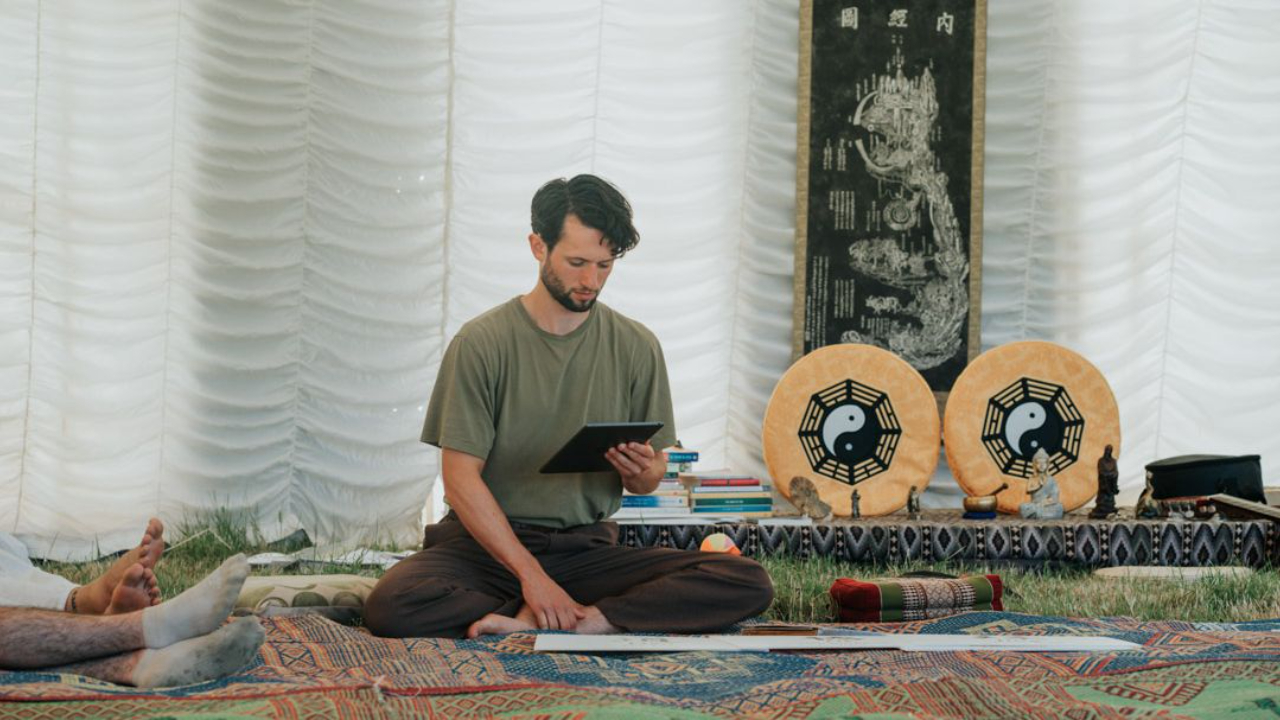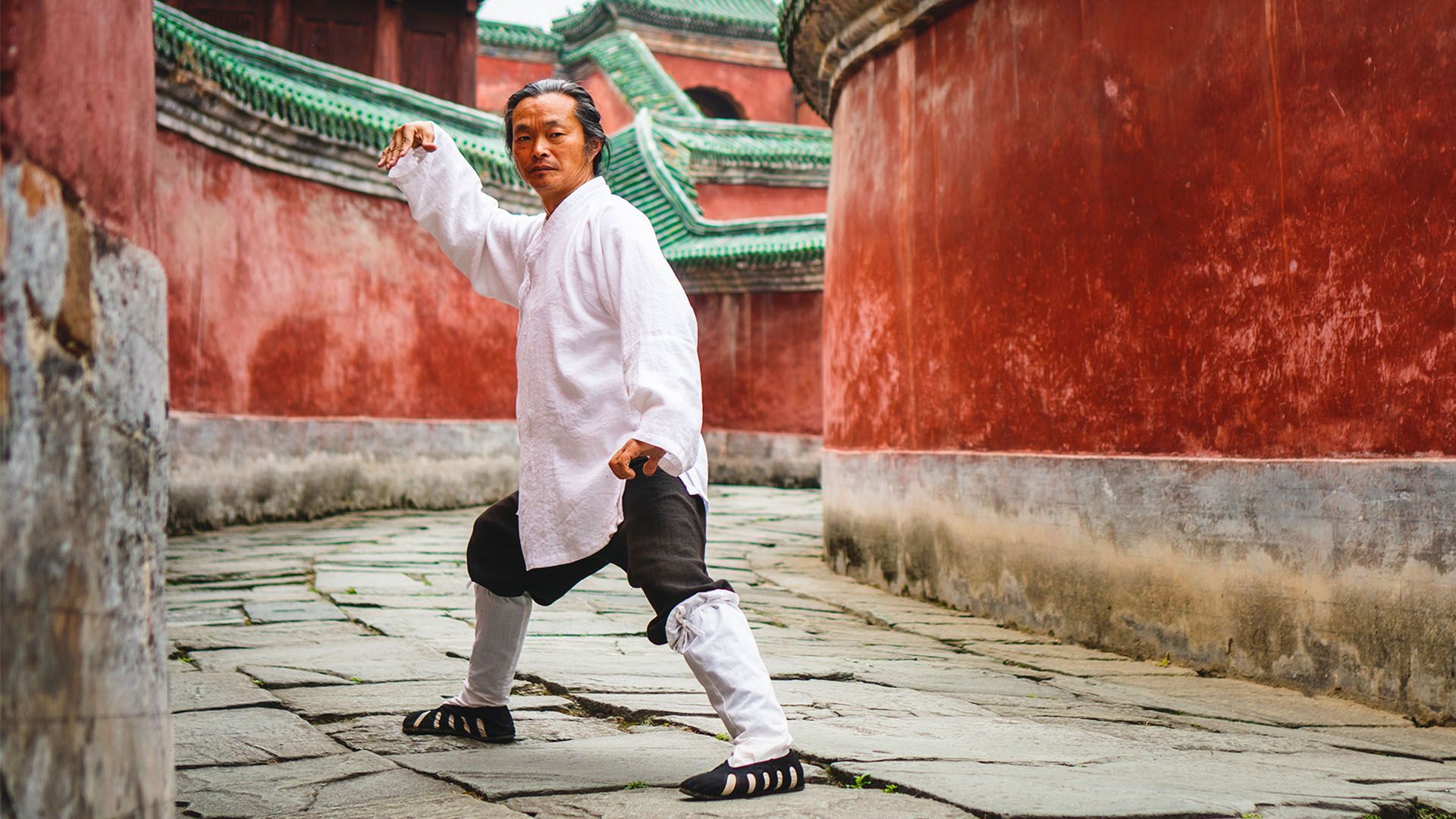Effortless Tai Chi Breathing: Step by Step Guide, Exercises & Techniques
Jun 01, 2023
When you are practicing Tai Chi, you may ask yourself, Am I breathing correctly?
Proper breathing technique not only makes for more enjoyable Tai Chi practice, but it can also help you through stress, fatigue, and challenging emotions. An awareness of the breath connects us to the body and helps return us to balance.
In this guide, we’ll walk through step-by-step how you can breathe effortlessly during your Tai Chi practice and in everyday life. We’ll explore wisdom from traditional Chinese medicine, Taoist philosophy, and, later on, a special video from Master Gu.
Qi: the breath of life
Inhale. Exhale. The fundamental yin yang rhythm with us from birth to death.
Wisdom traditions from around the world consider breath to be the fundamental energy of life. In the Bible, God breathed into Earth to create the first human. In Hawaii, the most powerful healers are known as Kahuna Ha, “Masters of the Breath.”
Ancient China’s great healers and philosophers used the word “Qi” as the term for both “breath” and “life energy.”. In Traditional Chinese Medicine (TCM), there are three main sources of human qi: breath, food, and our inherited biological energy.
Therefore, understanding how to breathe well is one of the basic ways to increase our life energy, enabling us to live well for many years to come.
The power of belly breathing: the Dan Tian
"The breathing of the true man comes from his heels, while men generally breathe only from their throats”.— Zhuangzi 300BC, Taoist Philosopher
If we want the full benefits of breathing and Tai Chi, we can gently guide our breath deep into our body, towards the Dan Tian. According to TCM, this ensures proper Qi circulation: fresh air reaches the Dan Tian, and then on the exhale, stagnant Qi can rise and be released.
In practice, this is how babies breathe, which is why the Taoists call it natural breathing. We may call it belly breathing or diaphragmatic breathing.
On the inhalation, the diaphragm moves downward, pushing the abdomen out. This increases the volume of the lungs, creating a partial vacuum and sucking air in. During exhalation, the diaphragm relaxes upward and the abdomen releases inward, pushing the air out.
Inhalation: abdomen expands. Exhalation: abdomen contracts
This is the most efficient and natural way to breathe. The dropping of the diaphragm opens the lower area of the lungs, where most of the oxygen exchange takes place. Contrary to popular belief, breathing abdominally actually creates more internal space—more room for the lungs to expand—than expanding the chest. The upper ribs are much less flexible than the lower ribs. This is why if you’re stressed and your breath is up in your chest, you feel tension and shortness of breath. Visualize your breath traveling down toward the Dan Tian. This practice will not only give you more oxygen for each breath; it will also release tension, and the diaphragm will give your internal organs a gentle massage. Not bad for simple breathing!
Should you breathe through the nose or mouth?
It's best to breathe through the nose. The nose contains fine hairs (cilia) and mucus that help trap and filter out dust, pollutants, and germs. Some of these harmful particles are swallowed, thus removing them from the respiratory tract.
Allow; don't force
Tai Chi and Taoism emphasize naturalness, simplicity, and tranquility. Too much focus on the breath can mean we get in our way. We start overthinking, and it’s harder for us to relax into a natural sense of poise and balance.
Feel free when you are doing your Tai Chi practice to forget everything you’ve read in this article! Simply be present with your movement and allow your breathing to happen. Other times, you can focus specifically on your Dan Tian breathing.
As you cycle between conscious attention and relaxed flow, over time your body will learn how to breathe effortlessly from the Dan Tian; less and less conscious intention will be needed.
Let’s try it out: standing breathing exercise
I invite you to try out how this breathing feels with a simple standing meditation.
Master Gu and I doing Zhan Zhuang (tree trunk standing meditation)
Stand in a qi gong or tree trunk (Zhan Zhuang) stance. Your legs are slightly wider than shoulder-width apart. Softness in your knees. Your weight spreads over your whole foot, not just your heels.
Your body is upright and relaxed. gently down, drop the elbows. Hands together in front of you around your Dan Tian.
Settle into this position. Get comfortable. Enjoy this time of presence!
When you are ready, close your eyes and start to follow your breath.
Where is it traveling to and from?
There is no judgment here, no correction or adjustment. Just observation. Bring your attention to Dan Tian. Visualise it. The place from which life arises is our vital energy center. Try to perceive it. Feel its energy radiating from just below your navel. You can use your imagination.
Now bring your attention back to your breath and, without forcing it, observe as the breathing fills your belly, connects with the Dan Tian, and then flows out.
Do not try to inflate your belly or force the stomach out. Instead, be curious and find that, with time, you can bring your breath deep into your belly. You will probably notice thoughts about other things. When this happens, just observe the thought without judgment and let it go. Return your attention to your breathing.
Do this for 5–10 minutes, and feel that your body begins to breathe this way without intention.
When you are ready, come out of the meditation by gently opening your eyes. Shake your body. Bounce up and down. Wake your body up. Let out a belly laugh! You are a Tai Chi practitioner on a beautiful exploration of your being.
How do you breathe during Tai Chi?
Now we have an idea of what effortless natural Dantian breathing feels like. Let’s move with it!
What’s the secret to Tai Chi breathing?
Breathe out on the attack. Breathe in on the transition.
Tai Chi has its roots in martial arts. While today we practice it for wellness, thinking about the martial origins can be helpful. In martial arts, a fighter will let out a quick breath through the nose on each attack. This increases their power and ensures tension is not held. In your Tai Chi practice, if you release air slowly as you push outwards, you will find a sense of powerful connection between your breath and body.
Watch this video with Master Gu from the Introduction to Taiji course on the Online Wudang Taoist Wellness Academy. In this lecture, he explains how the Qi moves around the body as he does tai chi:
Benefits of Tai Chi Breathing
1. Strengthens Lungs through Regular Practice:
Tai Chi's breathing method, often referred to as abdominal breathing, is central to strengthening the lungs. This style requires practitioners to breathe deeply into the abdomen, not just the chest, avoiding shallow breaths. Regular practice of this technique ensures that the lungs are fully engaged and efficiently working, which is particularly beneficial for those with chronic lung conditions. By learning to coordinate breath and movement, Tai Chi teaches how to harness the full capacity of the lungs.
2. Inspires a Mindful Approach to Stress Reduction:
Tai Chi and Qigong, similar in their approaches to breath and movement, inspire a mindful approach to stress reduction. The emphasis is on breathing through your nose in a controlled manner, which helps to calm the mind and relieve stress. This technique of mindfulness in breathing and movement helps to synchronize the body and mind, creating a peaceful harmony that reduces anxiety and fosters emotional well-being.
3. Improves Cardiovascular Health:
In Tai Chi, the gentle coordination of breath and movement improves cardiovascular health. The deliberate pace of expiration and inhalation during exercise enhances blood circulation and heart function. This is one of the many health benefits of Tai Chi, making it a suitable fitness practice for all ages. Regular Tai Chi, especially styles like Yang or Chen, effectively balances heart rate and blood pressure, delivering significant cardiovascular benefits.
4. Promotes Relaxation and Calmness:
The breathing style in Tai Chi, specifically the focus on controlled expiration, is key to promoting relaxation and calmness. Practitioners are taught to hold their breath momentarily and then release it slowly, a technique that triggers relaxation. This method helps to alleviate tension in the body and mind, making Tai Chi an effective practice for achieving a state of deep relaxation.
5. Enhances Overall Well-being and Mindfulness:
Tai Chi breathing exercises contribute significantly to overall well-being and mindfulness. The practice integrates physical movements with mental focus and breathing techniques, leading to a harmonious balance between mind and body. This balance is essential for holistic health, as it:
- Encourages emotional stability and mental clarity.
- Enhances the connection between the mind and body.
- Promotes a sense of inner peace and mindfulness.
- Improves sleep quality and energy levels.
Re-connect with the magic of breathing
We have explored a very simple but surprisingly powerful technique.
Techniques aside, just your intention to work with your breath is powerful by itself. It’s easy to take breathing for granted. Through the stresses of everyday life, many don’t stop to think about their breath—the magical energy that works through our body, keeping us alive, with no expectation of reward. The generosity of nature breathes through us. Paying attention to the breath can be a simple gratitude practice. Grounding us in the body and the world.
Have fun exploring these ideas. Breathe easy!
—
George Thompson & Rosa Parrella
San Feng Pai 16th Generation Tai Chi disciple, Taoist Explorer
Learn More Tai Chi Breathing Exercises From The Academy
If you would like to learn powerful, peaceful, and beautiful Tai Chi breathing with Master Gu, you are warmly invited to join the online Wudang Taoist Wellness Academy. The academy is designed to help you live long and well. It teaches Tai Chi, Qi Gong, and Taoist philosophy from the Wudang Mountains, China.
As a student, you can get in-depth with tai chi and qi gong breathing. You’ll learn concepts such as:
-
A powerful morning meridian adjustment standing meditation.
-
“Tu Na” expelling the old and inhaling the new.
-
How to stand strong like a tree.
-
Immortal’s Waterfall breathing technique
-
The principles of powerful, peaceful, and beautiful Tai Chi
-
Step-by-step tuition of Wudang Tai Chi forms
-
Step-by-step tuition of Qi Gong forms
-
Taoist philosophy
-
+more!
Further Reading
- The Way of Qi Gong - Kenneth Cohen: Bookshop.org USA Amazon
- Embrace Tiger, Return to Mountain: The Essence of Taiji - Chungliang Al Huang: Bookshop.org USA Bookshop.org UK Amazon
Disclosure: The above are affiliate links, meaning George receives a commission if you decide to make a purchase through the link. This is at no additional cost to you.








